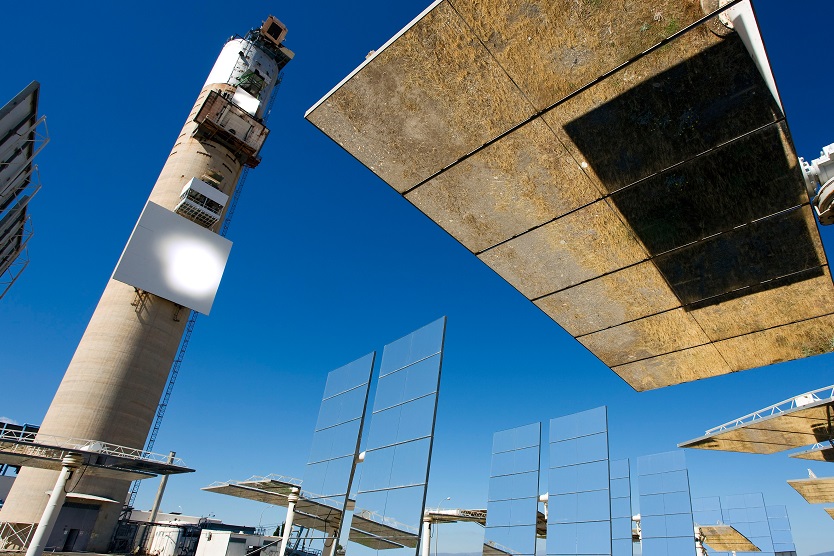
Heliostats concentrate solar radiation and reflect it onto a central receiver at the top of a tower to generate energy.
© DLR
Solar towers are widely considered to be the most efficient form of solar thermal plant. The biggest of these plants might use as many as 100,000 mirrors – called heliostats – in a radial field of up to a kilometre. The heliostats concentrate solar radiation and reflect it onto a central receiver at the top of the tower. Inside the tower, a heat transfer medium (molten salt) generates steam to turn a turbine.
In such a multi-faceted system, even minor angular anomalies in the heliostats add up to significant losses, despite a sun-tracking algorithm. Calibrating and realigning the mirrors is a time consuming and expensive business.
But thanks to the Fraunhofer Institute for Solar Energy Systems ISE, this process can now be dramatically sped up. In the project HelioControl, which was funded by the Federal Ministry for Economic Affairs and Energy, the team at ISE have developed an automated calibration and control system which regulates heliostatic points using targeted digital imaging. As heliostats account for between 30 to 40 percent of the investment costs into solar towers (which can run into millions of euros), the cost of construction and maintenance can be brought right down.
The mirrors are monitored using highly specialised cameras in the receiver tower. "The actual target point of the heliostat is determined from the images. If this deviates from the target point, the values are transferred to the heliostat control for correction," explains Dr Gregor Bern, project manager at ISE in a press release.
"With HelioControl, theoretically up to two heliostats per second can be measured in parallel,” he continues. “A power plant the size of Noor III in Morocco with 7,400 heliostats could thus be recalibrated in less than an hour instead of over several weeks as is currently the case". Researchers estimate that the system, which can be applied to existing solar plants as well, could reap savings of 5 percent.


